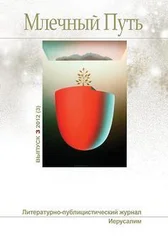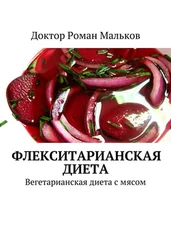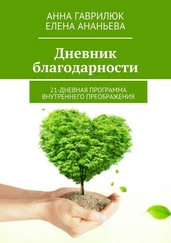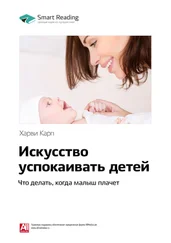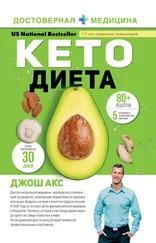Sevastianova K et al., “Effect of short-term carbohydrate overfeeding and long-term weight loss on liver fat in overweight humans”, The American Journal of Clinical Nutrition, 96/4 (2012), 727–734.
Bofetta J et al., “Fruitand vegetables intake and overall cancer risk in the European Prospective Investigation into Cancer and Nutrition (EPIC)”, Journal of the Nation Cancer Institute, 102/8(2010), 529–537.
Houchins JA et al., “Effects of fruit and vegetable, consumed in soul vs. beverage froms, on acute and chronic appetitive responses in lean and obese adults”, International Journal of Obesity (London) (20 Nov 2012).
Stookey JD et al., “Drinking water is associated with weight loss in overweight dieting women independent of diet and activity”, Obesity (Silver Spring), 16/11 (2008), 2481–2488.
Flood-Obaggy JE et al., “The effect of fruit in different from on energy intake and satiety t a meal”, Appetite , 52/2 (2009), 416–422.
Backhed F, “Host responses to the human microbiome”, Nutrition Reviews , 70 Suppl 1 (2012), S14-S17.
http://www.dh.gov.uk/health/2012/06/sodium-intakes/
Aune D, “Soft drinks, aspartame and the risk of cancer and cardiovascular disease ”, The American Journal of Clinical Nutririon , 96/6 (2012), 1249–1251.
Chapman CD, et al., “Lifestyle determinants of the drive to eat: a meta-analysis”, The American Journal of Clinical Nuyrition, 96/3 (20120), 492–497.
Chobanian AV, et al., “Seventh report of the Joint National Committee on Prevention, Detection, Evaluation, and Treatment of High Blood Pressure”, Hypertension, 42/6 (2013), 1206–1252.
Nawrot P et al., “Effects of caffeine on human health”, Food Addictives and Contaminants, 20/1 (2003), 1–30.
Almoosawi S, et al., “The effect of polyhenol-rich dark chocolate on fasting capillary whole blood glucose, total cholesterol, blood pressure and glucocorticoids in health overwaihgt and obese subjects”, British Journal of Nutrition, 103/6 (2010), 842–850.
Wansink B, ‘Environmental factors that unknowingly influence the consumption and intake of consumers’, Annual Review of Nutrition , 24 (2004), 455–479.
Dennis EA, et al., ‘Water consumption increases weight loss during a hypocaloric diet intervention in middle-aged and older adults’, Obesity (Silver Spring), 18/2 (2010), 300–307.
Rolls BJ et al., ‘The effect of large portion sizes on energy intake is sustained for 11 days’, Obesity , 15/6 (2007), 1535–1543.
Rolls BJ et al., ‘Reductions in portion size and energy density of foods are additive and lead to sustained decreases in energy intake’, The American Journal of Clinical Nutrition , 83/1 (2006), 11–7.
Belliste F, ‘Cognitive restraint can be offset by distraction, leading to increased meal intake in women’, The American Journal of Clinical Nutrition, 74/2 (2001), 197–200.
Hirsch, AR et al., ‘Effect of Television Viewing on Sensory-Specific Satiety: Are Leno and Letterman Obesogenic?’, 89th Annual Meeting Endocrine Society (Abstract) (2007).
Byrne NM et al., ‘Does metabolic compensation explain the majority of less-than-expected weight loss in obese adults during a short-term severe diet and exercise intervention?’ International Journal of Obesity , 36/11 (2012), 1472–1478.
Belliste F et al., ‘Meal frequency and energy balance’, British Journalof Nutrition , 77/1 (1997), S57–70.
Holmback U et al., ‘The human body may buffer small differences in meal size and timing during a 24-hour wake period provided energy balance is maintained’, Journalof Nutrition , 133/9 (2003), 2748–2755.
Nedeltcheva, AV et al., ‘Sleep curtailment is accompanied by increased intake of calories from snacks’, The American Journal of Clinical Nutrition , 89 (2009), 126–133.
Buxton OM et al., ‘Adverse metabolic consequences in humans of prolonged sleep restriction combined with circardian disruption’, Science Translational Medicine, 4/129 (2012),12.
Morgan PJ et al., ‘Efficacy of a workplace-based weight loss program for overweight male shift workers: the Workplace POWER (Preventing Obesity Without Eating like a Rabbit) randomized controlled trial. Preventive Medicine , 52/5 (2011), 317–325.
Halsey LG et al., ‘Does consuming breakfast influence activity levels? An experiment into the effect of breakfast consumption on eating habits and energy expenditure’, Public Health Nutrition , 15/2 (2012), 238–245.
Ratliff J et al., ‘Consuming eggs for breakfast influences plasma glucose and ghrelin, while reducing energy intake during the next 24 hours in adult men’, Nutrition Research , 30/2 (2010)/ 96–1003.
Mason C et al., ‘History of weight cycling does not impede future weight loss or metabolic improvements in postmenopausal women’, Metabolism , 62/1 (2013), 127–136.
Smeets AJ et al., ‘Acute effects on metabolism and appetite profile of one meal difference in the lower range of meal frequency’, British Journal of Nutrition , 99/6 (2008), 1316–1321.
Wing RR et al., ‘Prescribed “breaks” as a means to disrupt weight control effects’, Obesity Research , 11/2 (2003), 287–291.
May et al., ‘Elaborated Intrusion Theory: A Cognitive-Emotional Theory of Food Craving’, Current Obesity Reports , 1 (2012), 114–121.
Campagne DM, ‘The premenstrual syndrome revisited’, European Journal of Obstetrics and Gynecology and Reproductive Biology , 130/1 (2007), 4–17.
Redman LM et al., ‘Metabolic and behavioral compensations in response to caloric restriction: implications for the maintenance of weight loss’, PLoS One 4, e4377 (2009).
Garrow JS et al., ‘Meta-analysis: effect of exercise, with or without dieting, on the body composition of overweight subjects’, European Journal of Clinical Nutrition , 49 (1995), 1–10.
Gill JM et al., ‘Exercise and postprandial lipid metabolism: an update on potential mechanisms and interactions with high-carbohydrate diets (review)’. The Journal of Nutritional Biochemistry, 14/3 (2003), 122–132.
Byberg L et al., ‘Total mortality after changes in leisure time physical activity in 50 year old men: 35 year follow-up of population based cohort’, BMJ338 (2209), b688.
© Canadian Society for exercise Physiology PAR-Q, www.csep.ca
Wilmot EG et al., ‘Sedentary time in adults and the association with diabetes, cardiovascular disease and death: systematic review and meta-analysis’, Diabetologia 55 (2012), 2895–2905.
Читать дальше
Конец ознакомительного отрывка
Купить книгу




